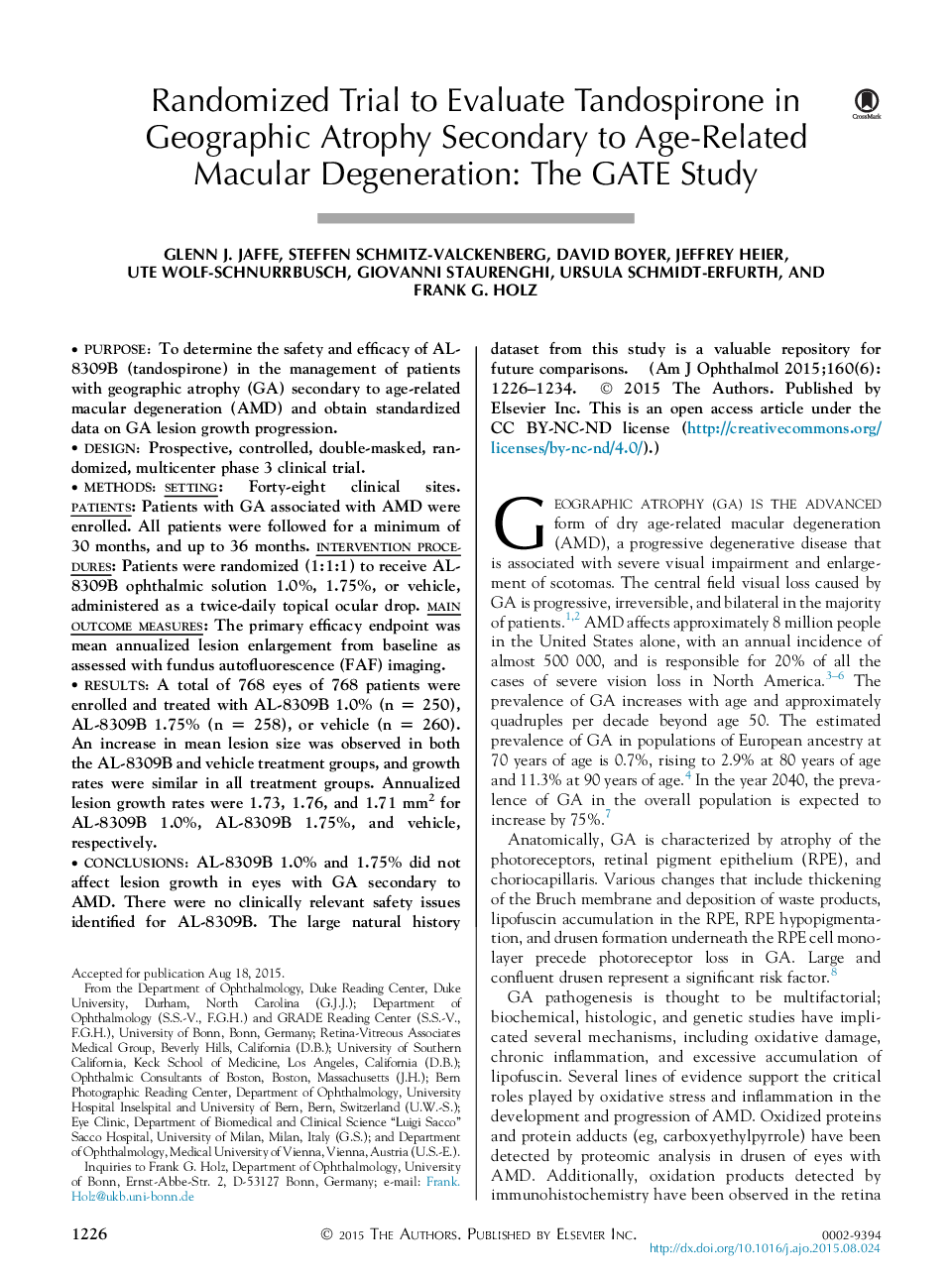| Article ID | Journal | Published Year | Pages | File Type |
|---|---|---|---|---|
| 6194888 | American Journal of Ophthalmology | 2015 | 9 Pages |
PurposeTo determine the safety and efficacy of AL-8309B (tandospirone) in the management of patients with geographic atrophy (GA) secondary to age-related macular degeneration (AMD) and obtain standardized data on GA lesion growth progression.DesignProspective, controlled, double-masked, randomized, multicenter phase 3 clinical trial.Methodssetting: Forty-eight clinical sites. patients: Patients with GA associated with AMD were enrolled. All patients were followed for a minimum of 30 months, and up to 36 months. intervention procedures: Patients were randomized (1:1:1) to receive AL-8309B ophthalmic solution 1.0%, 1.75%, or vehicle, administered as a twice-daily topical ocular drop. main outcome measures: The primary efficacy endpoint was mean annualized lesion enlargement from baseline as assessed with fundus autofluorescence (FAF) imaging.ResultsA total of 768 eyes of 768 patients were enrolled and treated with AL-8309B 1.0% (n = 250), AL-8309B 1.75% (n = 258), or vehicle (n = 260). An increase in mean lesion size was observed in both the AL-8309B and vehicle treatment groups, and growth rates were similar in all treatment groups. Annualized lesion growth rates were 1.73, 1.76, and 1.71 mm2 for AL-8309B 1.0%, AL-8309B 1.75%, and vehicle, respectively.ConclusionsAL-8309B 1.0% and 1.75% did not affect lesion growth in eyes with GA secondary to AMD. There were no clinically relevant safety issues identified for AL-8309B. The large natural history dataset from this study is a valuable repository for future comparisons.
